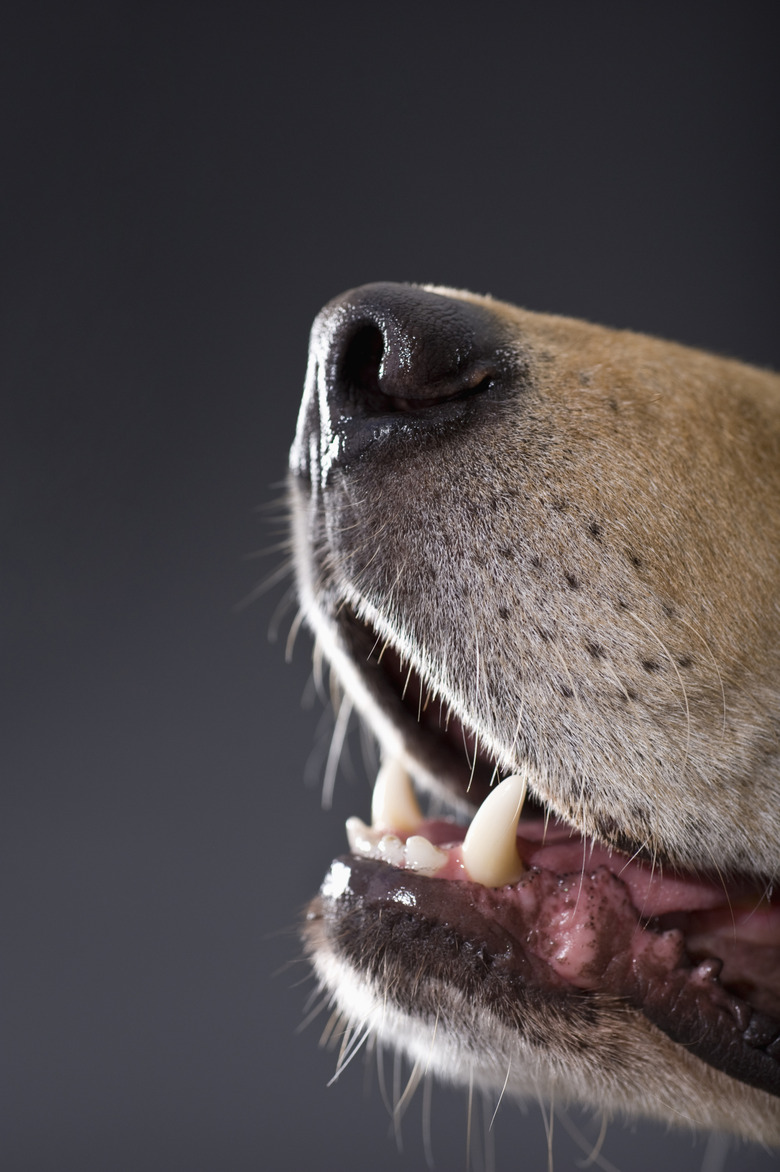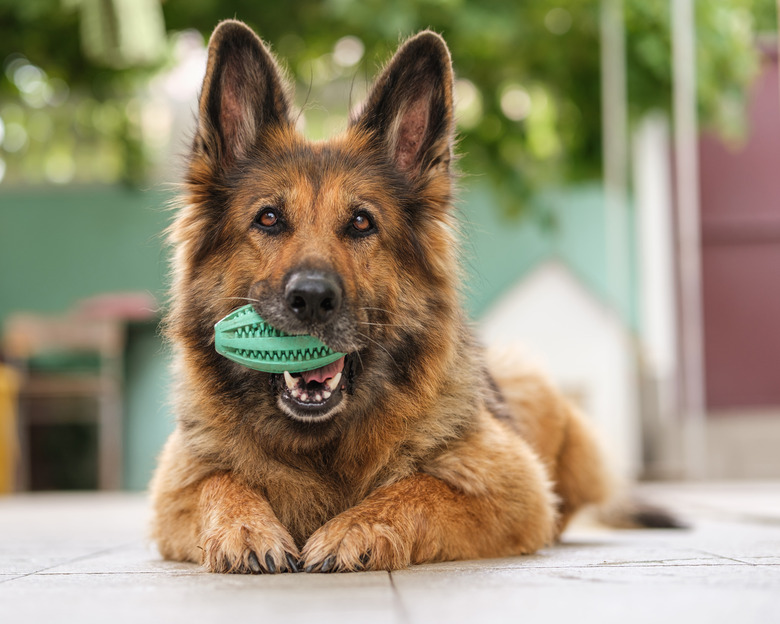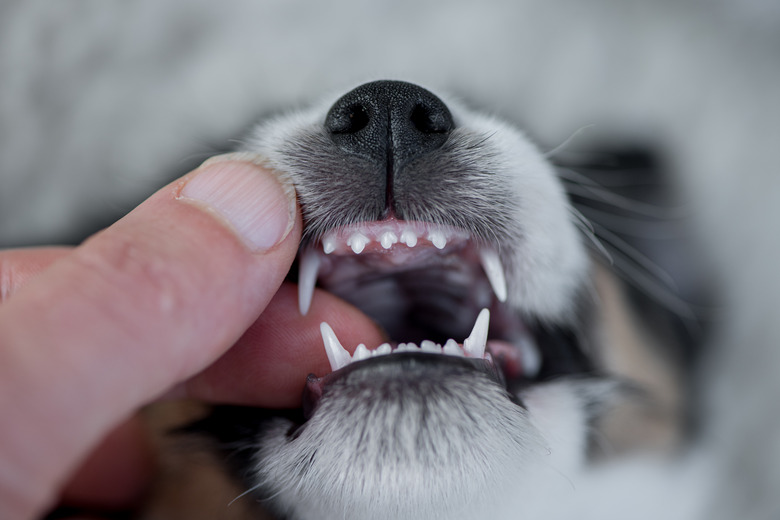What Do Brown Spots On My Dog's Gums Mean?
If you notice spots on your dog's gums that were not there before or changes in the overall color of the gums, you should contact your veterinarian to discuss possible underlying causes. Dog gums with any new or unusual pigmentation could indicate a change in your dog's health.
What color are healthy dog gums?
What color are healthy dog gums?
Healthy dog gums are pink in color. If you put pressure on your dog's gums with your finger, healthy gums will lighten to a pale pink or white and return to a more vibrant pink color within one to two seconds. If the capillary refill time, or the time it takes for the gums to become pink again, is much longer, it could indicate an issue with blood pressure or blood flow. A healthy dog's gums are also wet and smooth.
Dog gum colors and what they mean
Dog gum colors and what they mean
Different gum colors can indicate a variety of health issues. If you notice your dog's gums are no longer a healthy pink color or if they have spots, consult your veterinarian. Unhealthy gum colors and the possible causes include:
-
Brown or black gums: In some dog breeds, brown
or black spots on their gums is normal, but
it could be oral melanoma, especially if the spots change or a new one appears. Melanoma usually looks like a black
pigmented nodule. Look for redness or swelling along the gum lines near the
brown spots. You might even see evidence of slight bleeding. (Note that brown
matter on the actual teeth is likely tartar.) -
Pale pink or white gums: Pale gums can be
caused by shock, heart disease, poor circulation, or anemia. If you know that your dog has been injured, blood loss can also be a cause. Anemia has a
number of possible
underlying causes, including internal
bleeding, immune disease, blood clotting, kidney failure, and the ingestion of
rat poison. -
Pinkish-red gums: If gums are a
pinkish-red and inflamed, gingivitis may be the cause. Viruses and kidney disease
can also cause reddish and sometimes bleeding gums. When puppies are
teething, it's normal for their gum line to appear slightly red. -
Cherry red gums: The most common cause of
bright red gums is toxic ingestion. Other causes are high blood pressure and
heatstroke. -
Yellow gums: Icterus, or jaundice, causes
skin tissue, including the gums, to appear yellow. Causes of jaundice include hemolytic anemia, liver disease, and bile duct
obstruction. Yellow gums can also be a normal side effect of blood transfusions. -
Gray, purple, or blue gums: Heart disease,
low blood pressure, hypothermia, and respiratory disease can all lead to poor
circulation and low oxygenation, which can cause discoloration of this nature
in a dog's gums.
How to examine your dog’s gum color
How to examine your dog's gum color
Get to know what the normal appearance of your dog's mouth is. Gently lift your dog's upper lip to expose their gums. If your dog doesn't like this, it may take a little patience and some training to get them used to their mouth being handled. Observe the gums just above the canine teeth. Then, press your index finger on the gums to check the capillary refill time. If the gums appear anything other than a healthy pink color or if they do not return to pink within two seconds after applying pressure, contact your veterinarian.
Signs of unhealthy dog gums
Signs of unhealthy dog gums
If your dog seems to be chewing on one particular side of their mouth or not chewing at all and just gulping down their food, it's possible there is a painful gum or tooth infection. With gingivitis, in addition to light red gums, there may be brown tartar along the gum line.
Gum infections that are not treated can spread throughout the body and lead to other types of infections or health problems for your dog. Consequently, it is important to attend to your dog's dental health on a preventive basis and any time you suspect periodontal disease.
Bad or unusual breath can also be an indication that there is an issue with your dog's gums. The color, however, is the most noticeable sign of a more serious health problem, so it's best to make it a practice to check for any pigmentation other than bubble-gum pink.
How to prevent gum problems in dogs
How to prevent gum problems in dogs
Gum disease can be prevented with good oral hygiene that you perform for your dog. You can brush your dog's teeth to prevent tartar and plaque using a special dog toothbrush and dog toothpaste. Regular brushing is also a good way to ensure you're observing gum color often.
You can also use dental rinses specifically made for dogs. Never use human toothpaste or rinses, as they contain ingredients that should not be swallowed by a dog. Another prevention tactic is to give your dog dental chew treats that help massage the gums and remove tartar as the dog chews on them.
Small-breed dogs tend to have crowded teeth and are more prone to faster tartar accumulation and eventual tooth loss due to gum disease. These dogs in particular should have their teeth brushed daily in addition to regular physical exams. By the age of 2 or 3, a lot of dogs need their first professional dental cleaning (meaning under general anesthesia by a veterinarian). Small-breed dogs may need one by the age of 1 year old. Small breeds may also need professional cleanings twice a year instead of the typical yearly cleaning that a lot of other dogs need.
The bottom line
The bottom line
Gum health can be an indicator of your dog's overall health. Any changes in texture or gum color could be a sign of periodontal disease or a number of other conditions, from clotting disorders and anemia to toxicity and heart disease. Healthy, normal gums are bubble-gum pink. If you notice that the color of your dog's gums has changed or if you see abnormal spots, check with your veterinarian.


